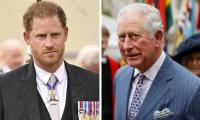How times change! Just a hundred years ago, France and Germany were the bitterest of enemies, constantly at each other throat, but today they are the two countries that have an unprecedented cordiality towards each other.
The year 2018 marks a hundred years of the signing of the armistice that brought the First World War to an end, a war that claimed millions of lives.
The story of the rapprochement that began between the two countries after the Second World War was most lucidly narrated by a German scholar, Ingo Espenschied. The occasion was meant to mark a hundred years after the end of World War I at a local hotel on Friday evening, under the aegis of the Consulate-General of Germany.
His thesis was that wars and the senseless killing of humans took place on account of nationalism and that nationalism was a destructive emotion. “Europe has been the centre of war, but today we are living in total peace and harmony, which has benefited not just the political leadership but the people of both countries down to the lowest level.
One of the important factors that played a decisive role was the people-to-people contacts.” The German scholar said that when he told his grandfather that he was going to study in France, his grandfather reacted with surprise, exclaiming, ”France is our traditional enemy.”
“There’s no such thing anymore,” he said, adding that France and Germany had the deepest cooperation in almost all spheres of activity. He said that at the height of the war, when the French city of Verdun was facing a pounding by the German armies, a bottled message written by six German soldiers was found in the area, which said, “Utopia and a possible garden of Eden is possible in a united Europe.”
It was this bottled message the manifestation of which we find today, he said. This was accompanied by historic photographs of the six soldiers that were informative in another sense too, the photographic techiques of that era. It was a valuable lecture in history for students of the subjects and the history buffs.
He traced the history of Franco-German warfare, including the Franco-German war of 1870 and the coming into existence of the German Empire which emerged as an industrial giant overtaking Britain, the mother of industrialisation.
He narrated how the measures to make Europe a totally war-free zone were stepped up after World War II, and starting with the meetings between French Foreign Minister Robert Schumann and German Chancellor Konrad Adeneur. This cooperation, he said, resulted in the most powerful economic bloc, the European community.
“When people come together, nationalism has no chance,” exclaimed Espenschied. The sub-tile of the seminar was, “Can this model be applied to India-Pakistan ties?” When this question was put to the floor, a whole lot of opinions came up but the oblique consensus among the participants was that Pakistan and India were a different ball game and the Franco-German model could not be juxtaposed on the India-Pakistan scenario as the issues dogging the two countries were of a very different nature.
One participant said, “How could we apply this model when just two or three militants can hold a government hostage and force their will on it?” This was interpreted as an allusion to the recent pressure by a religiously oriented party on the government of Pakistan as regards a Supreme Court decision in a recent case. Others thought that India and Pakistan issues were of a totally different nature and the situation was not as simplistic as the Franco-German one.
However, most participants agreed that they would like to see the dawn of the day when peace would prevail on the subcontinent. Espenschied, however, insisted that people-to-people contacts on both sides would bring about a marked improvement in the ties.
An aerial view of Karachi city. — AFP/FileCelebrating ShakespeareThe National Academy of Performing Arts is...
A representational image showing a person handcuffed and standing behind bars. — AFP/File HYDERABAD: A wanted...
Sindh Chief Secretary Syed Asif Hyder Shah gestures during a meeting on April 2, 2024. — Facebook/Chief Secretary...
Minister for Information, Excise, Taxation, Narcotics Control, transport and mass transit Sharjeel Inam Memon...
This image shows Karachi Police personnel and commandoes standing guard on November 29, 2023. — Facebook/Karachi...
Slain journalist Jan Muhammad Mahar can be seen in this image. — APP/File Sindh police chief Ghulam Nabi Memon on...







